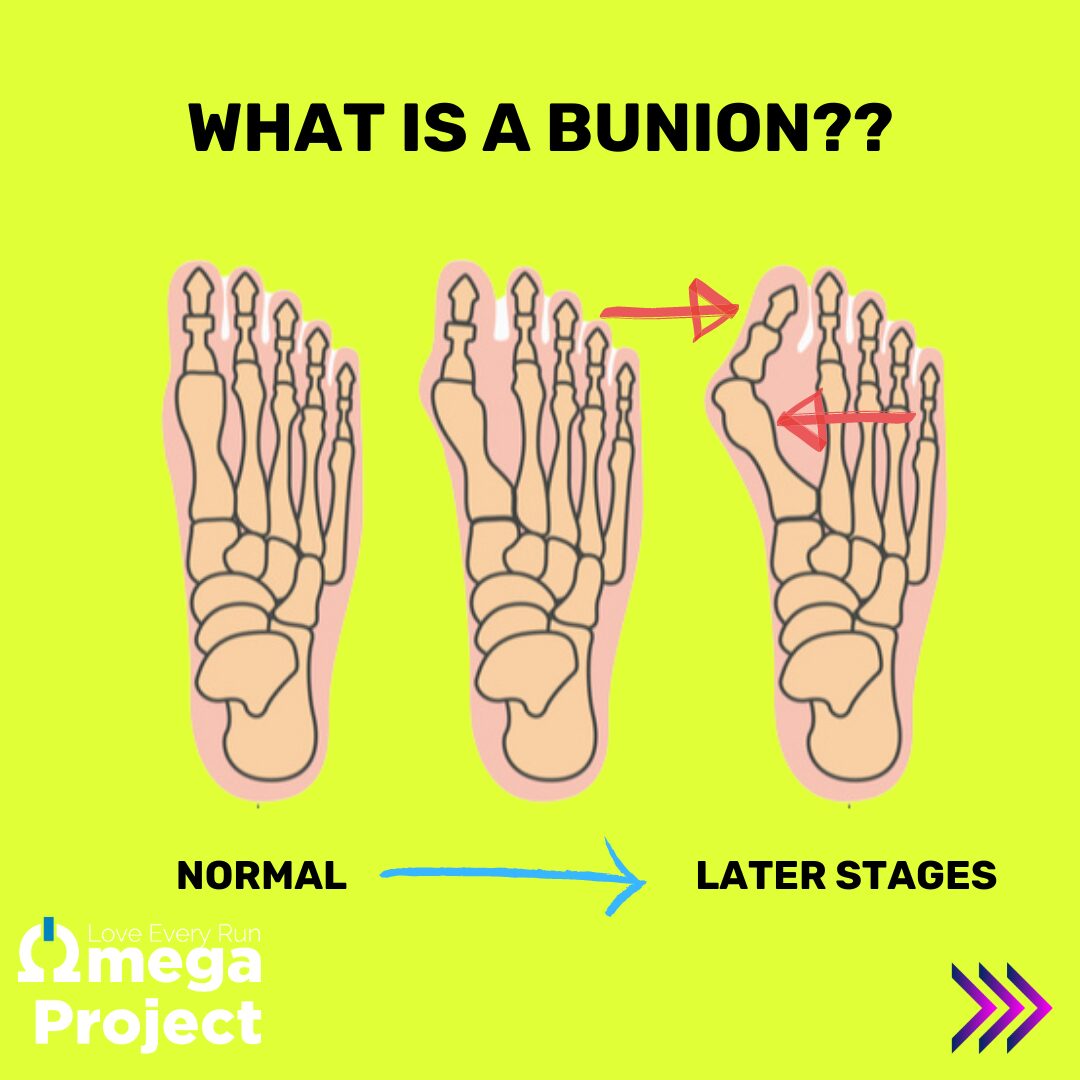Last week we discussed some of the implications of and causes for limited great toe mobility. We mentioned that these same conditions can lead to a bunion. But what is a bunion, anyway?
When looking at a bunion, it appears that a bunion is just an overgrowth of the big bone at the base of the 1st toe. However, a bunion is actually a more complex condition medically known as hallux valgus and it’s an alignment issue. What actually happens is that the 1st metatarsal deviates medially away from the 2-5 metatarsals and the great toe deviates laterally toward the other toes.
When this happens, the foot is destabilized through the medial arch. As it progresses, it becomes harder and harder to achieve the stable position of the foot that is needed for a powerful push-off. This can lead to an exacerbation of the conditions that led to the bunion in the first place.
There are several causes for bunions. Many people think they’re hereditary but they really aren’t. What might be hereditary is the general hyper-mobility of your joints. People fall on a scale that ranges from too much mobility to too little mobility in their joints. When we have too much mobility, it might be harder to achieve a stable foot at take-off.
The list below covers some of the basic causes for bunions. Several of these things can be related to each other. Some are a result of another. Some are the cause of another. Some of the reasons even become exacerbated by the bunion itself as stability decreases. In summary, it can be very complex. It’s important to know exactly why you have developed a bunion so you can fix it from the root. Even if you needed surgery, you’re going to want to know how to prevent the foot biomechanical issue from returning. Trust us!
PRIMARY CAUSES FOR BUNIONS
LIMITED GREAT TOE MOBILITY – If you can’t take off straight through the big toe, you heel will whip medially (toward the other foot) and you’ll take off from the inside of your big toe. This pressure can cause a callus on the inside of the big toe OR push the big toe toward the other toes.
UNSTABLE FOOT AT TOE-OFF/TAKE-OFF – The majority of our forces that go through the foot at take-off are supposed to be through the first metatarsal and great toe. If we can’t achieve stability at take-off, we lose a lot of our power and the forces get dispersed to areas of the foot that are not supposed to absorb or produce as much force. ONE of the results of this can be the formation of a bunion.
LIMITED ANKLE MOBILITY – Limited ankle mobility is similar to limited great toe mobility. If you can’t move straight over your foot, you’ll compensate by pronating (unstable position) longer than you’re supposed to. This can lead to an unstable foot at take-off.
WEAKNESS AND/OR ALIGNMENT ISSUES UP THE CHAIN – Primarily, when we look up the chain for someone with a bunion, we expect to see what we call collapsing mechanics (internal rotation of the lower and upper leg, collapsing at the hip). However, there are many other causes and sources of biomechanical dysfunction. These include weakness or dysfunction in the hips, pelvic floor, core, and diaphragm.
In summary, if you see this happening in your foot, come in for us to take a look! After a certain stage, it is impossible to recover the structure and stability of your foot without surgical intervention. This is not only a painful condition for your foot, but can affect your running performance and lead to other injuries.
There are things you can do for early stage bunions and to prevent bunions. Next week we’ll discuss some of the foot exercises I use in these cases.

